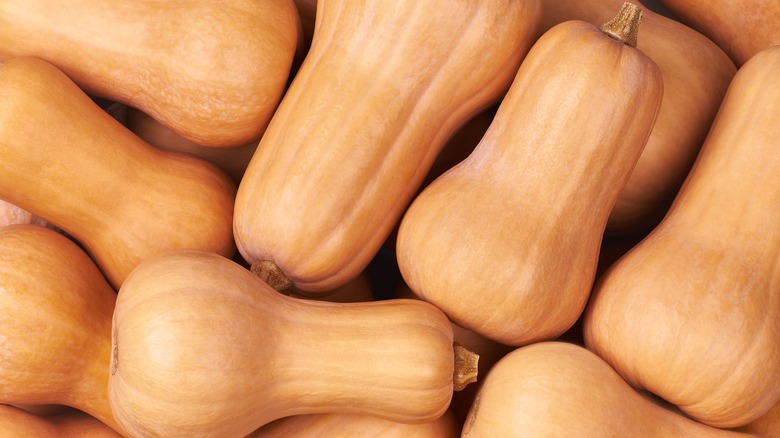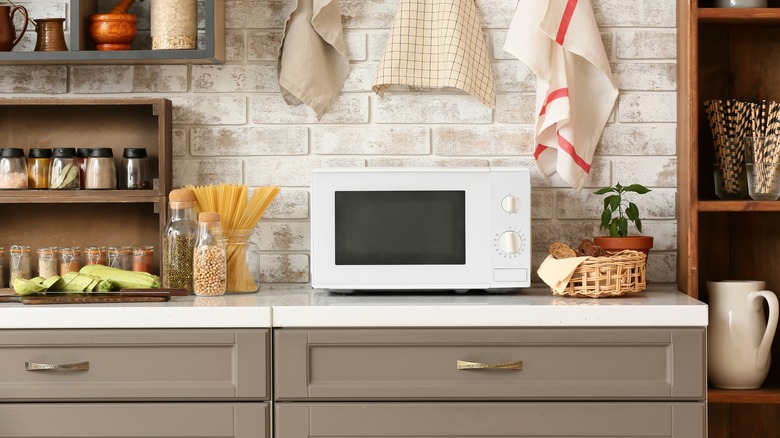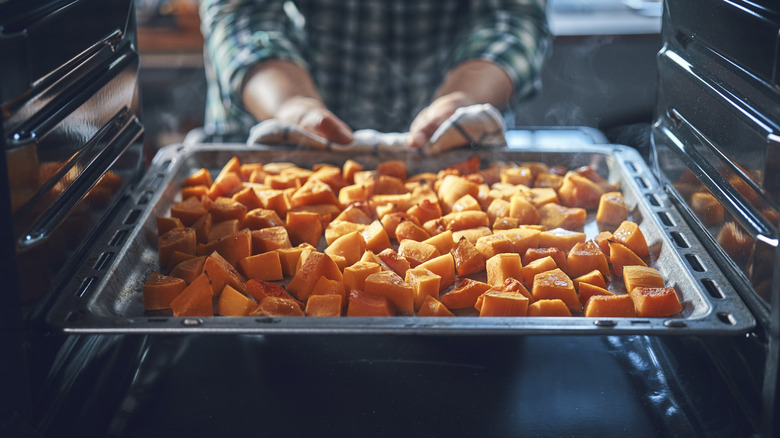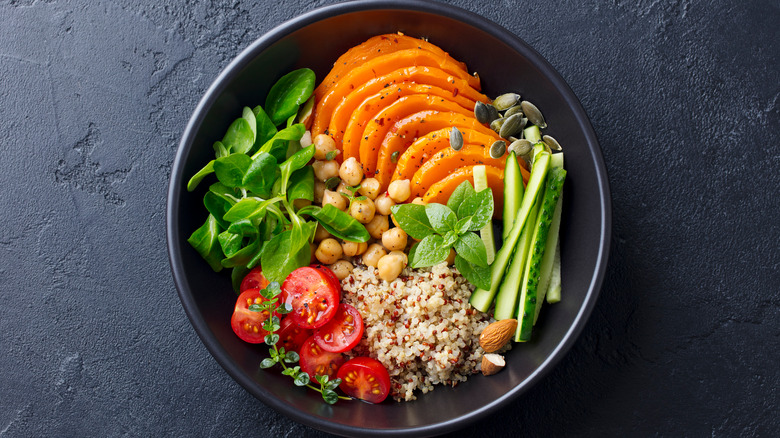The Best Way To Peel And Cut Butternut Squash
Contrary to what you might think, the skin of butternut squash is completely edible. But, before you go calculating all the time you've wasted peeling them, note that there are instances when the skin is best removed and instances when it's not really all that necessary. For the most part, it comes down to personal preference.
The skin on a butternut squash is notoriously thick, and it can either turn crisp and brittle or leathery and chewy, depending on the squash you buy. Typically, if you're making a soup, sauce, or anything that will be puréed, the skin can be retained until after it's been cooked. The same thing goes if you've purchased a freshly harvested, in-season squash with particularly soft skin. In this case, you can certainly eat the skin if that's how you prefer it.
How tasty it will be, however, can depend greatly on which squash you bring home with you from the store. For the best-tasting squash, shop while they're in season, from late summer to autumn. Also, when buying butternut squash, look for clean, undamaged skin with an off-white color. When you pick it up, it should feel heavy, and when you tap it, it should sound hollow.
Microwave butternut squash to make peeling easy
If you fall into the category of people who prefer to peel their squash, you probably know by now how much of a task it is. Butternut squash is not small, and its skin is far too tough for your usual fruit peeler. Peeling a butternut squash is a job fit only for your kitchen knife — and besides being a bit dangerous, it's also a bit time-consuming. To cut down on the time and effort required to peel the vegetable, you can turn to your trusty kitchen companion: the microwave.
Start by making a few slits in the skin and slicing off both ends of the squash. Then, put the squash in the microwave for about three and a half minutes. When the timer goes off, you'll open your microwave door to find a butternut squash with noticeably softer skin. Make sure you let it cool off for a bit, and once it won't burn your hands, you can start peeling the skin away. It should fall off with very little pressure. The texture and taste of the flesh will still taste the same, and you can go on to cook the squash however you normally would, which most likely will involve cutting it into cubes.
Cut butternut squash into cubes
The butternut squash's sheer size and weight can also make cutting it a mission. While you could always take the route of baking your squash in halves, most recipes will require you to break your squash down into one-inch cubes. This can be difficult to visualize when you're staring at your whole squash on the cutting board. But if you just slow down and take it one step at a time, the results will be well worth it.
Begin by cutting off each end of your squash and putting it in the microwave for a few minutes, following the directions outlined above. Then, after you've peeled off the skin, you can cut the squash in half lengthwise to see the seeds. Once you scoop and discard the seeds, you can begin cutting each half of the squash into horizontal slices; then, to speed up the cubing process, you can line up a couple of slices at a time and chop them into cubes together. You should come out with uniform cubes perfect for virtually any cooking method you're going for.
Whether you're roasting them in the oven, cooking them on the stovetop, boiling, or microwaving them, your squash should come out soft, evenly cooked, and ready to eat.
Butternut squash recipes
Butternut squash can be added to just about anything, but it's equally as delicious on its own. Season it with cumin, chili flakes, and fresh rosemary for spiced baked butternut squash, or toss it in cinnamon and maple syrup for maple-roasted butternut squash. If you really want to go all out for fall, you can even purée it and mix it into your hot apple cider.
Butternut squash can also bring a seasonal twist to other go-to dishes. It's commonly found added to pasta, whether that be mac and cheese or sausage and butternut squash pasta. When puréed with garlic, onion, and rosemary, or sage and garam masala, it works fantastically as a pasta sauce or even as a cheese replacement in your ravioli. For something lighter, you can always make a roasted butternut squash salad or try it in a Thai-style butternut squash soup.



